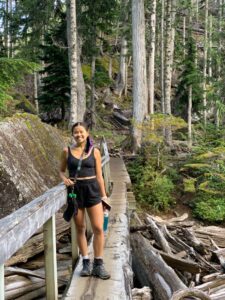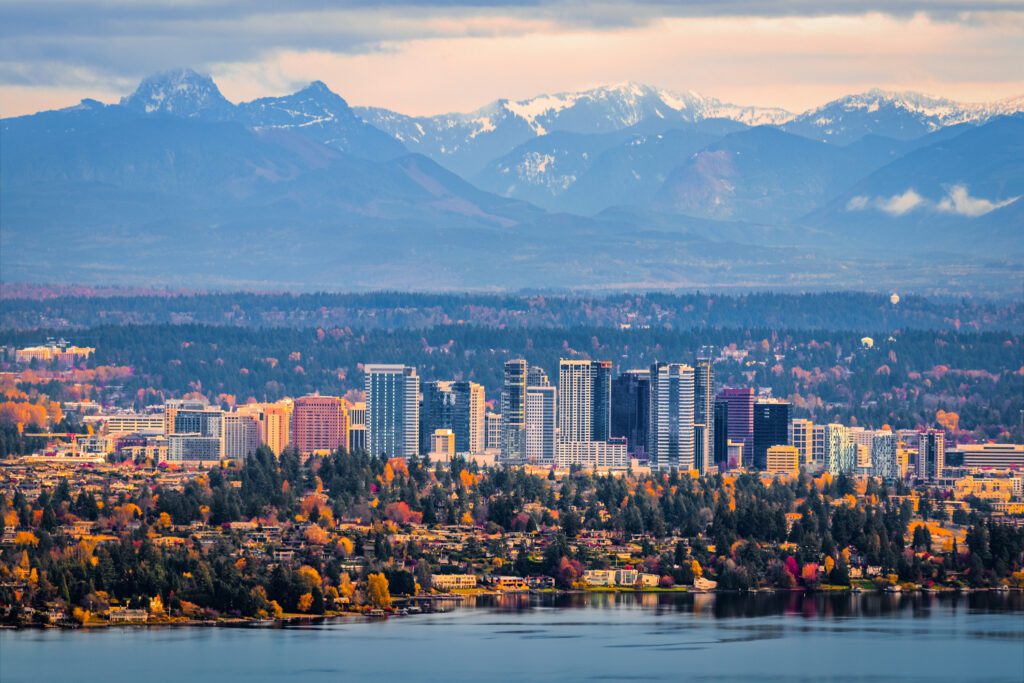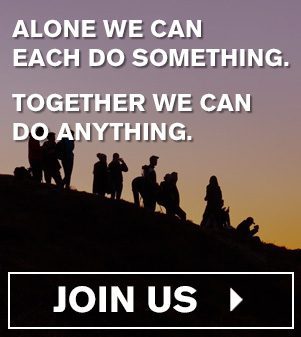Q&A with Cha Cha Sawyer, Coalition Coordinator for King County Play Equity Coalition
The Outdoor Foundation’s Thrive Outside Initiative is a national network of partners working to create a more inclusive and accessible outdoor experience for all. In this Impact Stories series, we talk to local Thrive Outside leaders to learn more about their community and their vision for the future.
Seattle may be within striking distance of some of the nation’s most prized backcountry playgrounds, and yet access to those areas is still a major challenge for many families in the area. The King County Play Equity Coalition is made up of over 100 organizations that are working to address those barriers. With the support of the Thrive Outside Initiative, they’re currently building an Outdoor Recreation Action Team to support their members in collaborating to achieve shared goals.
We asked Cha Cha Sawyer, the organization’s coalition coordinator, what challenges Seattle faces in making the outdoors more equitable, and how separate organizations from seemingly disparate fields can work together to solve larger societal issues.
What are the barriers to outdoor access in Seattle that you’re working to address?
The lack of access to transportation is a really big barrier for a lot of our communities to get access to the greater outdoors. It’s not only access to Pacific Northwest mountains, trails, camping, and hiking. The issues are even locally-based, in urban settings, as well.
Most people who live in Seattle are considered to be within walking distance from their local park, but most people aren’t going to their local parks these days. There’s a sense that those places aren’t safe, especially for youth. Parents don’t want their children going there, even with an adult present, and it can be challenging to find transportation to places where they do feel safe. Homelessness has increased since COVID and urban parks tend to be where unhoused people may feel safer to stay. So, a lot of families in those neighborhoods don’t feel safe going to those parks.
The lack of transportation networks, and access to the networks that do exist, is also a problem, particularly in the southern region of Seattle. And finally, play fields, facilities, and parks where kids can recreate and play are often underfunded, so they’re not physically safe to play on.
Transportation is also a problem for everyone, even those who do have cars—some trailheads just get so overwhelmed that you might not be able to hike when you get there because there’s no space for your car.
What’s happening in Seattle to address those transportation issues?
We’re working to facilitate or provide transportation where possible, while also working on increasing access to public transit. Some individual organizations have been able to raise funding to buy their own vans, like Outdoors for All, which provides adaptive programming for youth with disabilities. The City of Seattle Department of Transportation is also working on a new transit plan. They’re gathering information from community members to see how they can be more accommodating for access to the outdoors and for kids to access sports and programming in the Puget Sound area. Part of our outdoor recreation action team is to get some of these parks departments together to see how we can better serve those organizations.
What outcomes are you striving for during the Thrive Outside campaign?
First, we’re convening an outdoor recreation action team that will meet regularly and be representative of the youth population we intend to focus on and serve. A lot of our action team is really about shared learning. They’ll build a peer-to-peer learning community that will foster connection and collaboration between community members. We’re also identifying collective actions so the team can increase outdoor participation of historically underserved youth, and sustain and enhance that work for the future.
How do you define the “outdoors?”
When I think about the outdoors, I think about the indigenous perspective of what land means and what taking care of the land means. Being outdoors isn’t just doing something active for yourself, but it also can mean how you’re caring for the land that you’re on, and how you learn about the land. How do you have a relationship with the land? I think a great way to be outdoors is through community gardens and food cultivation, and learning how the land gives to you and how you can give it back to the land. I think “outdoors” just means being outside.
How are you working with existing organizations?
Part of our value in being community-centered is not recreating the wheel. We know there are a lot of people on the ground, grassroots and community-based organizations who are doing a lot of really great work in the outdoor space. And they’ve been doing it, it’s not new. For us to be able to convene these members in an action team, it isn’t for the purpose of identifying a new solution, or creating a new action item for all these organizations. It’s to enhance their work.
We are serving a base of about 115 organizational members, so we’re always asking how we can enhance their partnerships and collaboration. From 2020 to 2021, we reserved some of our funding to create a mini collaboration program in which members could find another organization they wanted to work with, and apply together for up to $10,000 to support a two-year timeline of planning and implementation. One result was a collaboration between Evergreen Mountain Biking Alliance, YETI (Youth Experiential Training Institute), and the King County Department of Public Defense. They came together to serve a community that they might not have historically served before. Together, they increased access to bikes, biking instruction, and access to outdoor trails for youth in the foster care system.
What are you most excited about right now?
Honestly, it’s the launch of this action team. I run another action team, the Youth Action Team, and that’s how we involve youth in the shared work that we do. It’s been great to see how we can empower youth as leaders in this work that mostly adults run and control. I’m really excited for the Outdoor Recreation Action Team because I think there’s such a conundrum on what “outdoors” means, and what the definition is. I love those kinds of tough—but very progressive—conversations.
I’m excited to see how people will come in this room and talk about “outdoors” and “outside,” and to see who’s attending and get a cross-sector network together. Yes, we have all these parks departments, outdoor recreation, and national education-based programs coming in. It’s a very big necessity that we involve organizations that don’t do that work, but that serve youth in other ways. If we really are trying to increase access for youth to the outdoors, it’s not just about youth already in these programs. It’s also about how we can get youth in social services-based programs to also be connected so they can start getting exposure and experience, and maintain long-term access to parks, forests, and trails.






